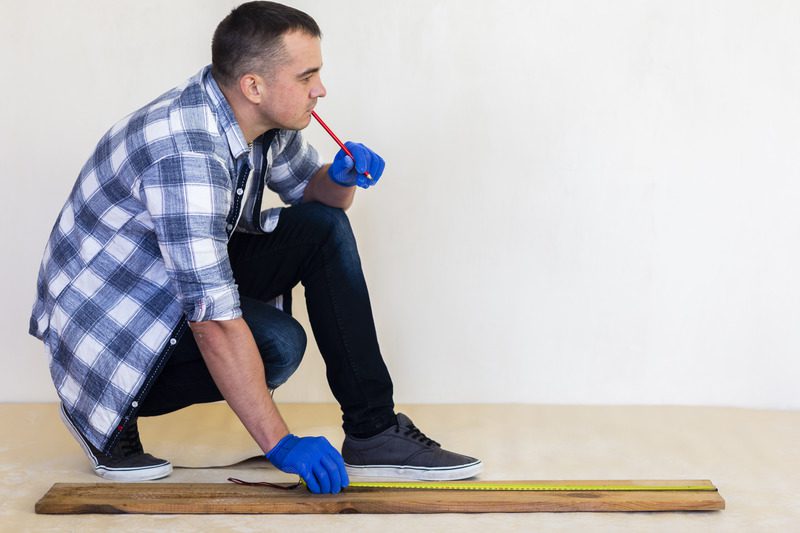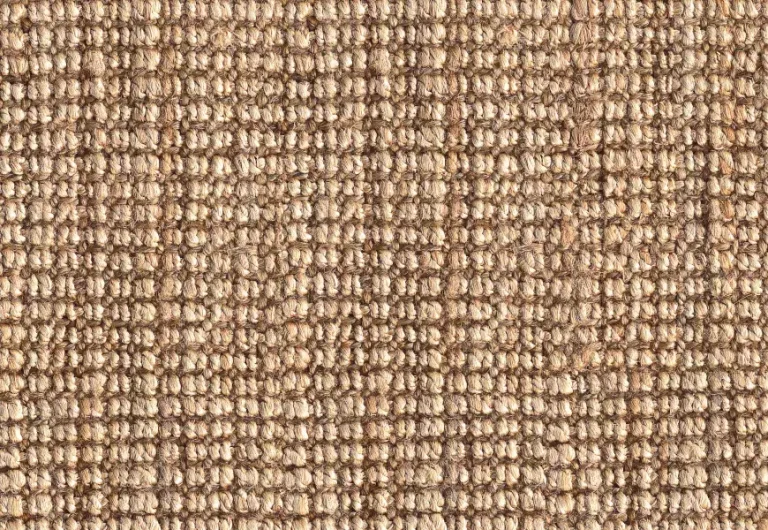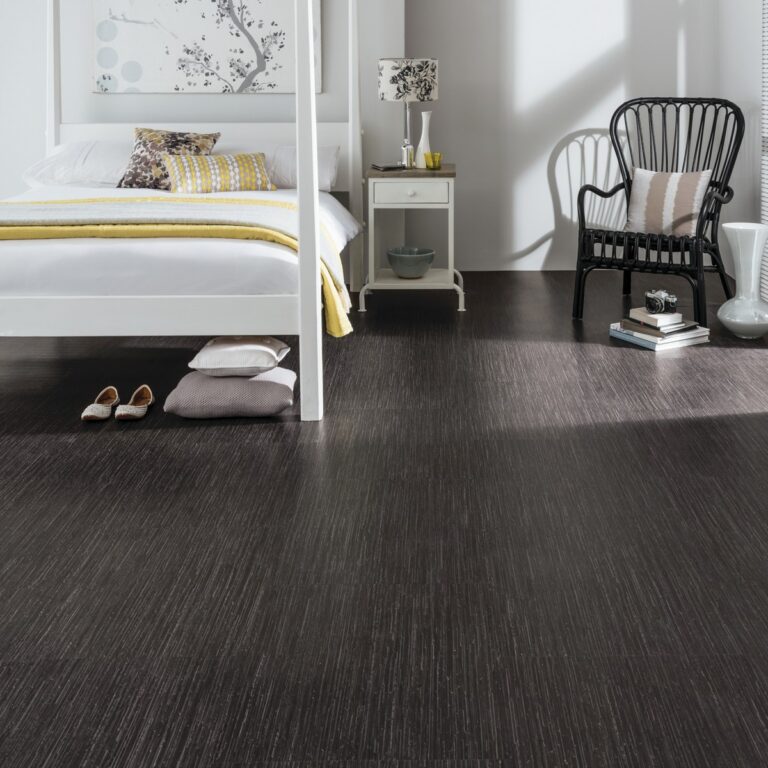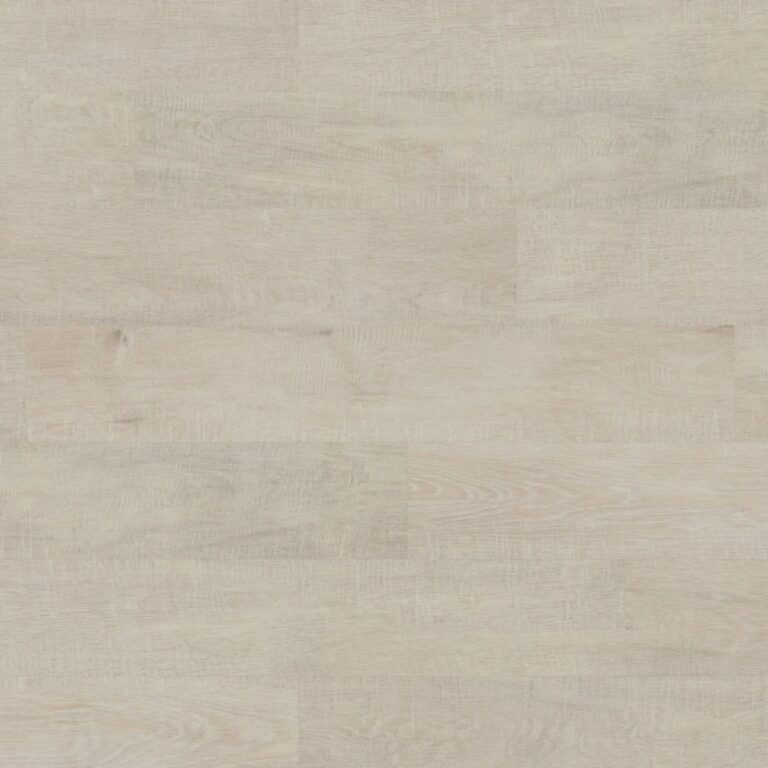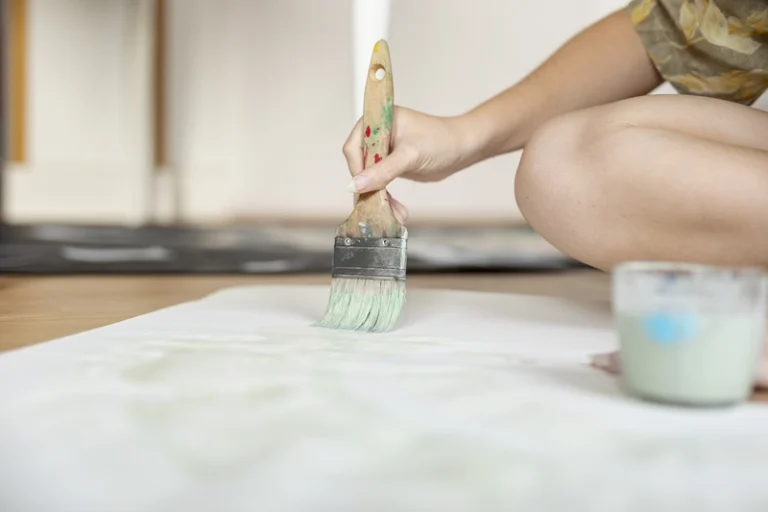Are you considering buying new flooring to elevate your office or office with the right flooring? Before you can have your new flooring installed, you may need to remove the old flooring. But what types of flooring require removal before installation, and how is this process done? And maybe you’re also curious, does flooring installation include removal?
In this article, we will explore the importance of removing old flooring before installing new flooring, the benefits of doing so, the risks of not removing old flooring, the cost of flooring removal, and whether it’s possible to install new flooring over old flooring. So, let’s dive in and find out everything you need to know about flooring installation and removal!
Key Points:
Some people may want to know does flooring installation include removal. Flooring installation may or may not include removal, depending on the type of flooring and the preferences of the homeowner. Removing old flooring before installation has benefits such as improving aesthetics, increasing property value, and eliminating potential health hazards. Not removing old flooring can lead to risks such as an uneven surface for new flooring, trapping moisture and mold growth, and a decreased lifespan of the new flooring.
What is Flooring Installation?
Before discussing more about does flooring installation include removal, it helps if you first understand what flooring installation is.
Flooring installation is the process of laying down various types of flooring materials, such as vinyl, carpet, ceramic tile and laminate, to create a functional and aesthetically pleasing surface for residential and commercial spaces. It encompasses the expertise of flooring contractors and adherence to quality standards outlined in the Ultimate Checklist for successful installations.
Each type of flooring material offers its unique properties and requires specific installation techniques. For instance, vinyl flooring is known for its durability and ease of maintenance, making it a popular choice for high-traffic areas. On the other hand, carpet provides warmth and comfort, especially in bedrooms and living rooms.
The role of flooring contractors is crucial in ensuring that the installation process is carried out efficiently and with precision. From preparing the subfloor to accurately cutting and placing the flooring material, their expertise contributes to the overall quality of the installation.
Adhering to the Ultimate Checklist is essential to avoid common pitfalls in flooring installation. This checklist covers important aspects such as proper subfloor preparation, acclimatisation of materials, accurate measurements and meticulous attention to detail during the installation process.
Does Flooring Installation Include Removal?
The question does floor installation include removal is a common one among property owners embarking on a renovation project. According to insights from industry experts, the inclusion of removal services in flooring installation varies based on multiple factors and preferences.
So, do flooring installers remove old flooring all the time? One of the key factors influencing the inclusion of removal in flooring installation is the type of existing flooring.
For instance, if the property has old carpet or tile flooring that needs to be removed before installing new hardwood or laminate flooring, then removal would be a necessary part of the process.
The condition of the subfloor also plays a crucial role.
If the subfloor requires repair or preparation before the new flooring can be installed, removal might be necessary.
Types of flooring need to be removed before installation
The question does flooring installation include removal certainly cannot be separated from the discussion around what types of flooring need to be removed before installation.
Certain types of flooring, such as vinyl, carpet, ceramic tile, and laminate, often require removal before new installations, as their characteristics and installation requirements may conflict with overlaying procedures. Understanding the specific needs of each flooring type is essential for well-considered choices regarding removal and installation practices.
Vinyl flooring, for instance, requires a smooth and level subfloor for proper installation. This often requires the removal of existing flooring to achieve the necessary surface condition.
Similarly, the cushioning and underlay associated with the carpet may not be compatible with laying new flooring on top. This may require complete removal.
Ceramic tile’s rigid nature demands a solid foundation, often requiring the removal of existing materials.
Laminate flooring, known for its floating installation method, also typically requires removal. This is to avoid issues with height differentials and subfloor imperfections.
Each of these flooring types presents unique complexities that should be carefully considered when contemplating new installations.
How is the flooring removal done?
Flooring removal involves a series of systematic steps and the utilisation of specialised tools to effectively eliminate existing flooring materials. Essential equipment, such as RCD-protected power tools and dust containment systems, ensures safety and precision during the removal process, contributing to successful outcomes for subsequent installations. So, what does flooring installation include?
The first step in flooring removal is the assessment of the type of flooring material to be removed. Subsequently, the appropriate tools are selected based on the specific characteristics of the material, such as hardwood, laminate, tile, or carpet. For instance, crowbars, floor scrapers, and power chisels may be utilised for different types of flooring.
It is crucial to adhere to safety guidelines and wear protective gear, especially eye protection and gloves, to prevent injuries.
Employing dust containment systems helps in minimising airborne particles and maintaining a clean work environment.
a. What Tools Are Needed for Flooring Removal?
Flooring removal requires a comprehensive range of tools, including, but not limited to, scrapers, crowbars, floor strippers, and dust containment systems, to effectively deal with various flooring materials and underlying underlayment.
The selection and proper use of these tools significantly affect the efficiency and quality of the removal process.
Scrapers are essential tools for loosening and removing adhesive residues during the process. Crowbars are essential for lifting and pulling up old flooring while minimising damage to the subfloor.
Floor strippers are designed to handle resilient flooring layers, such as vinyl or linoleum. Using dust containment systems plays a critical role in maintaining a clean and safe work environment, ensuring proper containment and disposal of debris and dust.
b. What Are the Steps for Flooring Removal?
The systematic execution of flooring removal involves distinct steps, encompassing initial assessment, preparation, extraction, and disposal, as outlined by industry experts. Following these precise steps ensures a methodical and efficient removal process, laying the groundwork for successful subsequent installations.
Initial assessment plays a crucial role in the flooring removal process, determining the type and condition of the existing flooring materials. It involves inspecting for any structural issues, identifying the subfloor material, and assessing the presence of adhesives or fasteners.
Preparation follows, involving the clearing of the removal area, disconnecting utilities if necessary, and ensuring proper ventilation to minimise dust and debris. This stage also includes the removal of skirting boards and trimming door jambs to facilitate a smoother extraction process.
The extraction phase requires careful attention to minimise damage to the subfloor. It involves the use of appropriate tools and techniques, such as floor scrapers, pry bars, and floor strippers.
Disposition entails responsibly handling the removed materials. Proper disposal methods, in compliance with local regulations, ensure environmental sustainability and safety.
What are the benefits of removing old flooring?
The removal of old flooring offers several compelling benefits, including the enhancement of space aesthetics, the elevation of property value, and the elimination of potential health hazards associated with deteriorating materials. These advantages underscore the value of prioritising removal as a precursor to new flooring installations.
First and foremost, removing old flooring rejuvenates the entire space, breathing new life into the room and creating an inviting ambience. The visual transformation not only revitalises the aesthetics of the area but also provides a fresh canvas for the installation of modern and stylish flooring options.
This, in turn, contributes to an overall increase in the property’s appeal and market value, making it more attractive to potential buyers and tenants.
a. Enhances the appearance of the space
The removal of old flooring contributes to a significant improvement in the aesthetics of the space, enabling a fresh canvas for subsequent flooring installations to enhance the visual appeal and ambience of residential and commercial areas. Emphasising aesthetics as a primary benefit reinforces the importance of removal in achieving transformative outcomes.
When old and worn-out flooring is eliminated, it creates an opportunity to revitalise the entire space. By upgrading the flooring, the room or area can be instantly transformed, instantly lifting the overall aesthetic.
The removal process clears the way for new design choices, allowing for a refreshed foundation for further enhancements. This not only improves the visual allure but also uplifts the overall mood and atmosphere of the space.
b. Increases Property Value
The removal of old flooring leads to a tangible increase in property value, as it signifies a commitment to quality and aesthetics, enhancing the appeal and desirability of residential and commercial properties.
Positioning removal as a value-adding investment underscores its significance in the context of flooring installations and property enhancements.
By replacing outdated or worn flooring, property owners can instantly revitalise the visual appeal of their spaces, creating a more welcoming and attractive environment for residents, visitors, or potential buyers. This investment in modern flooring solutions extends beyond mere aesthetics, as it also communicates dedication to maintenance and improvement, which are key factors in influencing property value.
Updated flooring can enhance the functionality and practicality of spaces, aligning with current lifestyle trends and preferences. From hardwood to luxury vinyl, the options for contemporary flooring solutions offer durability, style, and ease of maintenance – all aspects that significantly contribute to the overall appeal and value of a property.
c. Removes Potential Health Risks
The removal of old flooring serves as a proactive measure in eliminating potential health hazards associated with deteriorating materials, such as mould, mildew, and allergens, thereby fostering a healthier indoor environment for occupants.
This proactive step not only mitigates the risks of respiratory issues and allergies but also promotes better air quality within the living spaces.
The presence of a deteriorating floor can contribute to the accumulation of dust and other particulate matter, impacting the overall well-being of individuals within the space.
By prioritising the removal of old flooring, homeowners can ensure a cleaner, safer, and more hygienic environment, aligning with the overarching goal of maintaining a healthy indoor setting.
What are the dangers of not removing old flooring?
The decision to forgo the removal of old flooring entails inherent risks, including the potential for an uneven surface for new flooring, the risk of trapping moisture leading to mould growth, and the likelihood of decreased lifespan and performance for the newly installed flooring. Understanding these risks is pivotal in making informed choices regarding removal practices.
One of the primary risks of not removing the old flooring is the possibility of unsightly irregularities and tripping hazards underneath the new flooring. This can compromise stability and pose safety concerns. Additionally, moisture retention in old flooring can create an environment conducive to mould growth, posing health risks and requiring costly remediation.
The structural integrity of the new flooring is also at risk when the old flooring is not removed. This can lead to warping, buckling, and a shortened lifespan for the new flooring. Therefore, careful consideration of these risks is crucial in safeguarding the investment and longevity of new flooring installations.
a. Uneven Surface for New Flooring
The decision to retain old flooring risks leading to an uneven surface for new flooring installations, compromising the aesthetics and functionality of the space.
When old flooring is kept in place, there is a high likelihood of inconsistencies and imperfections emerging on the surface. This can make it challenging to achieve the desired smoothness and levelness required for installing new flooring material. An uneven surface not only affects the visual appeal of the space, but it can also pose potential hazards such as tripping and uneven wear on the new flooring.
b. Trapping of Moisture and Mold Growth
The decision to forego the removal of old flooring increases the risk of trapping moisture and fostering mould growth, posing significant health and structural concerns in residential and commercial settings.
Moisture entrapment beneath old flooring can lead to various issues, including mould proliferation, which can compromise indoor air quality and pose health risks. The presence of mould spores in the air can trigger respiratory problems and allergies, especially in individuals with pre-existing conditions. Prolonged mould exposure can lead to structural deterioration, weakening the integrity of the building. This not only affects the safety of the occupants but also results in costly repairs. Therefore, prioritising the removal of old flooring is essential in preventing these potential hazards and maintaining a healthy indoor environment.
c. Reduced lifespan of new flooring
Opting not to remove old flooring may result in a decreased lifespan and compromised performance for new flooring. This can undermine the long-term durability and functionality of the installed materials.
The decision to retain old flooring can have far-reaching consequences that go beyond mere aesthetics. Plus the visual impact, the durability and functionality of the new installation are at stake.
A sturdy foundation is crucial for any flooring project. Failing to remove the old flooring can jeopardise the overall integrity, leading to issues such as uneven surfaces, creaking noises, and diminished load-bearing capacity. This ultimately affects the long-term quality of the installation.
How much does flooring removal cost?
When talking about does flooring installation include removal, some people also consider the cost factor.
The cost of flooring removal varies based on multiple factors, including the type and quantity of flooring materials, the presence of underlying underlay, and the utilisation of professional services. Leveraging insights from industry standards helps in understanding the comprehensive cost considerations associated with removal for well-considered choices.
One of the key factors that influences removal costs is the type of flooring material involved. This can include hardwood, laminate, tile, carpet, or vinyl. Each material requires different removal techniques and may have varying disposal costs.
The quantity of flooring to be removed plays a significant role in determining the overall cost. Larger areas or multiple rooms may require more time and labour, impacting the pricing.
The presence of underlying underlay can also affect the removal process and cost. Older underlay materials or challenging subfloor conditions may result in higher removal expenses, especially if extensive preparation is needed.
Opting for professional removal services can enhance the efficiency and quality of the process. However, it also adds to the overall cost due to labour and expertise. Professional services bring added value through proper handling and disposal, as well as potential savings in the long run.
Factors Affecting Flooring Removal Cost
Several key factors influence the cost of flooring removal. These include the type of flooring materials, the presence and condition of underlying underlayment, and the extent of professional involvement and expertise. These factors significantly impact overall cost assessments, making it crucial for individuals to understand them for informed budgeting and decision-making for removal projects.
The type of flooring materials is an essential consideration in cost estimation. For instance, hardwood floors require meticulous removal techniques and can be labour-intensive, thus increasing the overall cost.
Similarly, the condition of the underlying underlayment, whether it requires repair or replacement, adds to the project expenses. The involvement and proficiency of professionals, including labour and specialised equipment, are influential factors that determine the overall cost of flooring removal. It’s vital for individuals to be aware of these factors for accurate budgeting and effective project planning.
Can you install new flooring over old flooring?
The practice of installing new flooring over existing materials presents both advantages and drawbacks, as elucidated by industry insights.
Assessing the pros and cons of this approach is essential for property owners seeking to make informed decisions regarding flooring renovations and installations.
One of the key advantages of installing new flooring over existing materials is the potential cost savings. By avoiding the need for complete removal of the old flooring, property owners can reduce labour and material costs.
This approach can save time and minimise disruption during the renovation process. It’s important to consider the potential drawbacks, such as height variations and the impact on door clearances, especially in older homes with multiple flooring layers.
Proper evaluation and preparation are crucial to ensure the new flooring adheres securely and achieves the desired longevity.
Advantages and Disadvantages of Installing New Flooring Over Old Flooring
The decision to install new flooring over old materials offers benefits such as cost savings, reduced construction waste, and shorter project timelines, while also posing drawbacks related to compromised structural integrity and limited design flexibility. Understanding the trade-offs between these pros and cons is crucial for making informed choices regarding flooring installations.
One of the main advantages of laying new flooring over existing materials is the potential cost savings it provides. By avoiding the need to remove the old flooring, homeowners can save on demolition and disposal costs. The reduced labour and material expenses can contribute to overall project savings. This method minimises construction waste, leading to a more environmentally friendly approach.
The shorter project timelines associated with installing new flooring over existing materials can be a significant advantage, especially for those seeking quick renovations. With proper preparation and the absence of time-consuming subfloor installations, the new flooring can be laid more expeditiously, allowing for faster completion of the project.
It’s essential to consider the drawbacks of this approach. One notable concern is the potential compromise of structural integrity. Layering new flooring over old surfaces may impact the evenness and stability of the floor, leading to uneven surfaces or structural issues over time. Limited design flexibility can be a drawback for individuals looking to make substantial design changes, as the existing flooring may restrict the options available for new materials and patterns.
From the explanation above, of course you already know the answer to does flooring installation include removal or not?
In conclusion, whether or not floor installation is considered removal depends on a number of factors, one of which is the type of flooring.
If you find difficulties in installing flooring, use the trusted carpet and flooring fitting services of TEKA Flooring.
TEKA Flooring‘s expert team is here to provide all your flooring needs, whether for residential, commercial, or specialised projects such as hospital-grade flooring installation. Call us today to get a FREE quote on 01733 731 930.
Read also: What To Put Under Vinyl Flooring? Choose Based On The Room!







